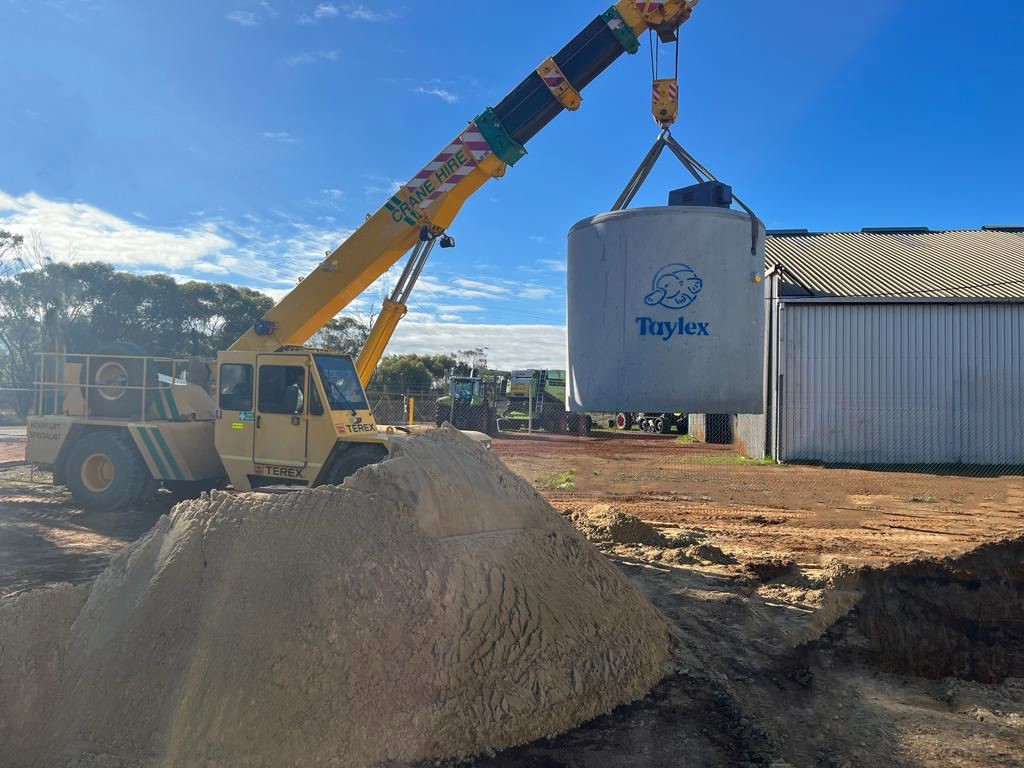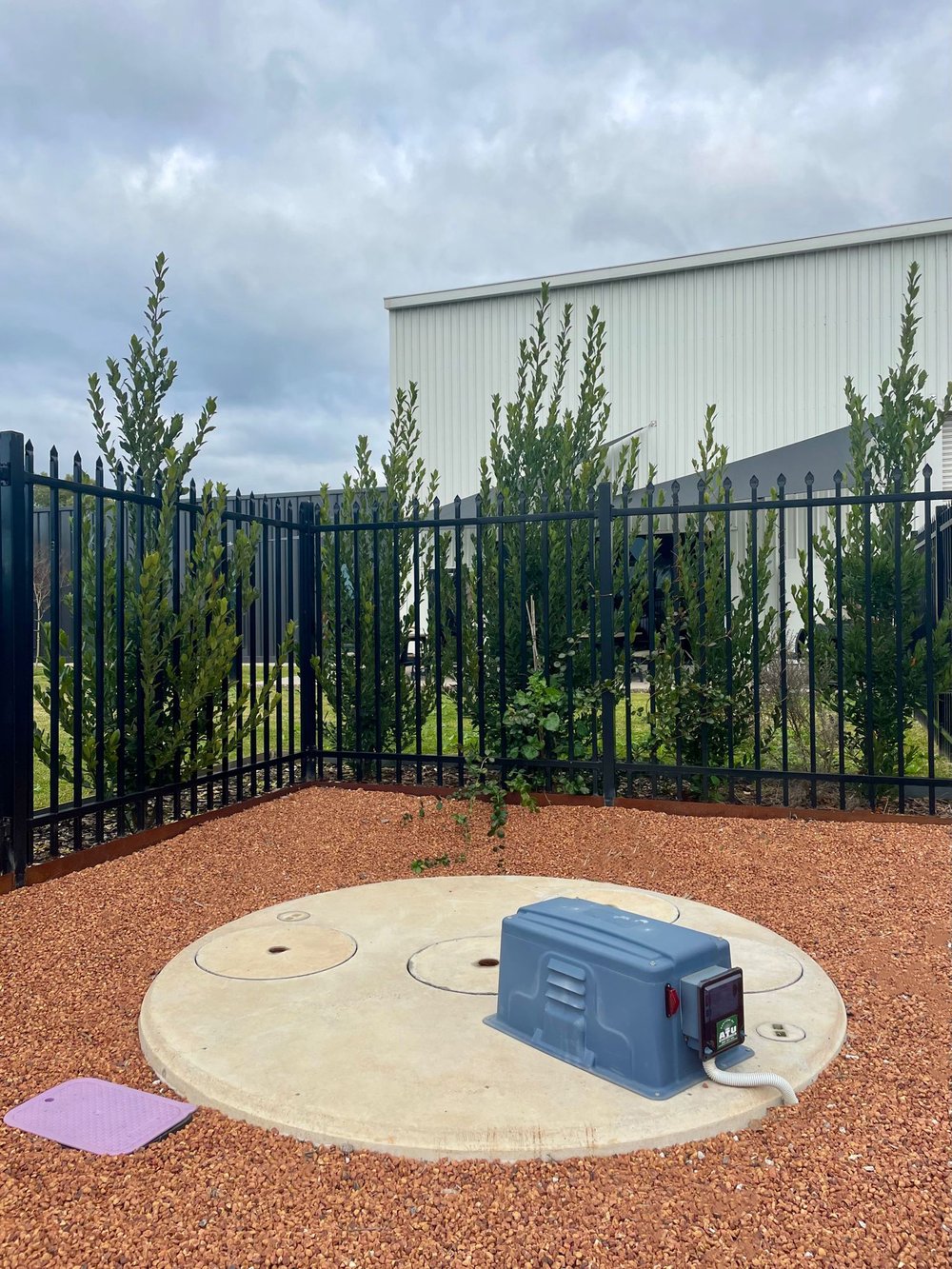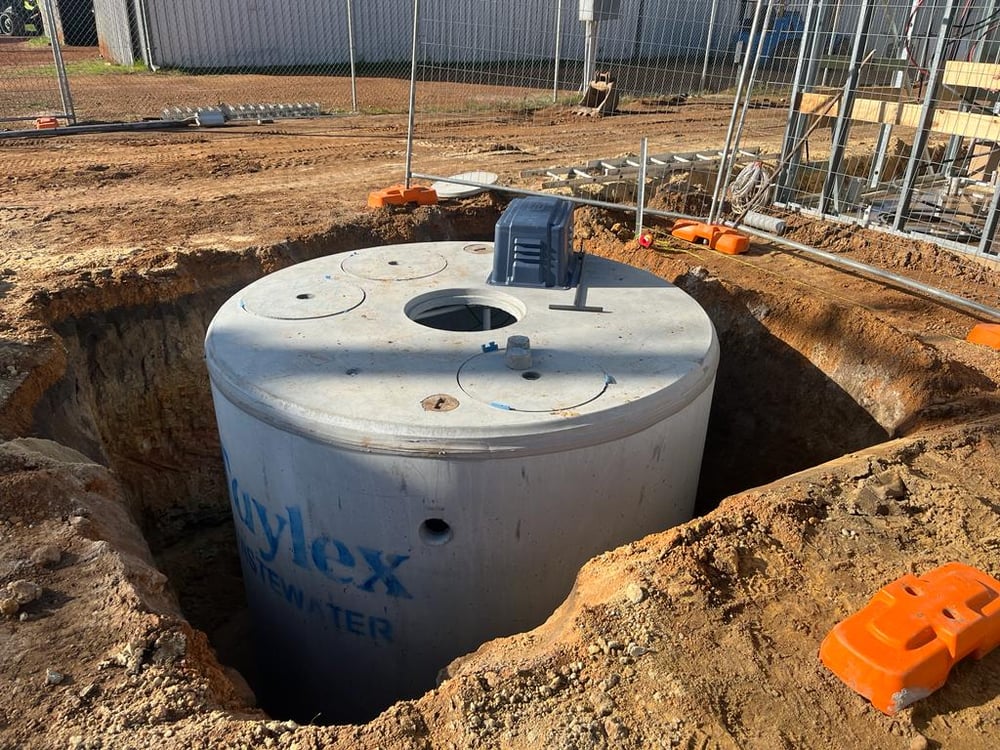
When building a new home on an unsewered property, you may need to decide what type of waste management system to install.
Two popular options are Aerobic Treatment Units (ATUs) and septic systems.
In this blog, we’ll explore the differences between these two systems and the pros and cons of each.
ATU vs. Septic Tanks
Septic systems are the traditional choice for rural properties without access to centralised sewer systems. They consist of a large tank buried underground that holds the wastewater from the house. The solid waste settles to the bottom of the tank, while the liquid waste flows out through a series of perforated pipes into a drain field, where it is gradually absorbed into the soil.
ATUs, on the other hand, are a newer technology that uses a combination of oxygen, bacteria, and other microorganisms to break down and treat the wastewater. The system typically consists of a pre-treatment tank, an aeration chamber, and a final clarifier tank, which separates the treated water from the remaining solids.
What Are the Advantages and Disadvantages of Each System?
Septic systems are generally cheaper to install than ATUs and require less maintenance. They are also very reliable, as long as they are properly maintained. While septic systems may require maintenance, it is usually needed only every few years, making it a convenient option for homeowners. However, some septic systems may need to be installed above ground (inverted) or semi-inverted for clay-type soils. It's important to consider the location of the septic system, as it cannot be placed within 30 meters of a waterway. Additionally, septic systems take up more space compared to ATUs and are more limited in terms of placement options. For example, septic systems cannot pump uphill.
.jpg?width=1000&height=772&name=IMG-20221114-WA0027%20(1).jpg)
Standard septic systems have 2 leach drains and a diverter valve that needs to be turned annually to switch between drains, allowing the unused drain to dry out over 12 months. ATUs do not have leach drains or this requirement. Leach drains for standard septic systems have specific installation requirements. In sandy soils, drains are fully installed in the ground with a layer of sand on top. In clay soils, semi-inverted or fully inverted installation may be required, with tanks partially or fully out of the ground, surrounded by free-draining soil. Plant growth on leach drains is not allowed as it reduces evaporation, a key process for these systems.
ATUs, on the other hand, are more expensive to install and require more frequent maintenance. Western Australian health legislation, mandates that ATUs be serviced at least every three months, incurring additional costs for homeowners. This regular servicing ensures the proper functioning of the ATU and compliance with health regulations. However, the benefit of ATUs is their ability to provide a higher level of wastewater treatment. They are designed to meet strict standards, often making the treated water suitable for irrigation or even drinking. ATUs are also more compact and flexible in terms of placement options, as the treated water can be discharged directly into the environment.

ATU distribution areas can have plants, except for food crops/fruit trees, improving aesthetics and providing environmental benefits. Disposal methods for treated wastewater vary based on soil type, with options for spraying above-ground or below-ground disposal.

Additional Points to Consider...
Both systems can be effective when designed, installed, and maintained properly. However, ATUs have an advantage in treating high-strength wastewater, commonly found in commercial or industrial applications.
Licensed installers are highly recommended for standard septic system installation, as only a licensed plumber can connect house drains to the system. Authorised installers are required for ATU installation to ensure compliance with standards.
The Code of Practice for ATUs provides detailed requirements for those seeking more information. It is essential to conduct your own research and consult with ATU providers to gain a better understanding of the system and its requirements.
In Conclusion
Ultimately, the choice between an ATU and a septic system will depend on a number of factors, including the size and location of the property, the type of wastewater being produced, and the homeowner’s environmental goals and budget.
If you're considering building a new home and need help with waste management, Evoke Living Homes can assist you in making the right choice. Contact us today to learn more about our modular homes and the waste management systems we offer. Let us help you build the home of your dreams!



0